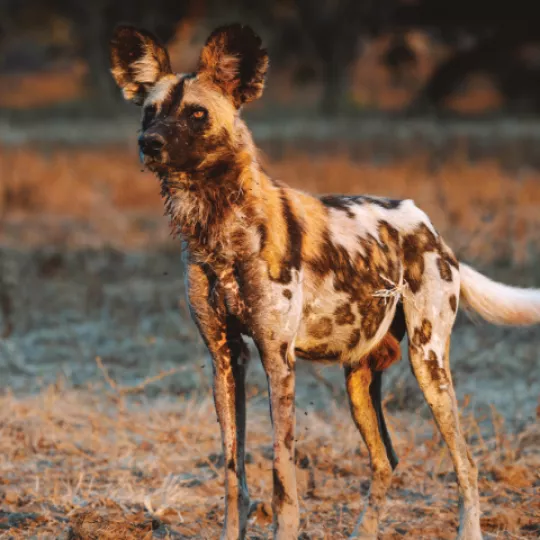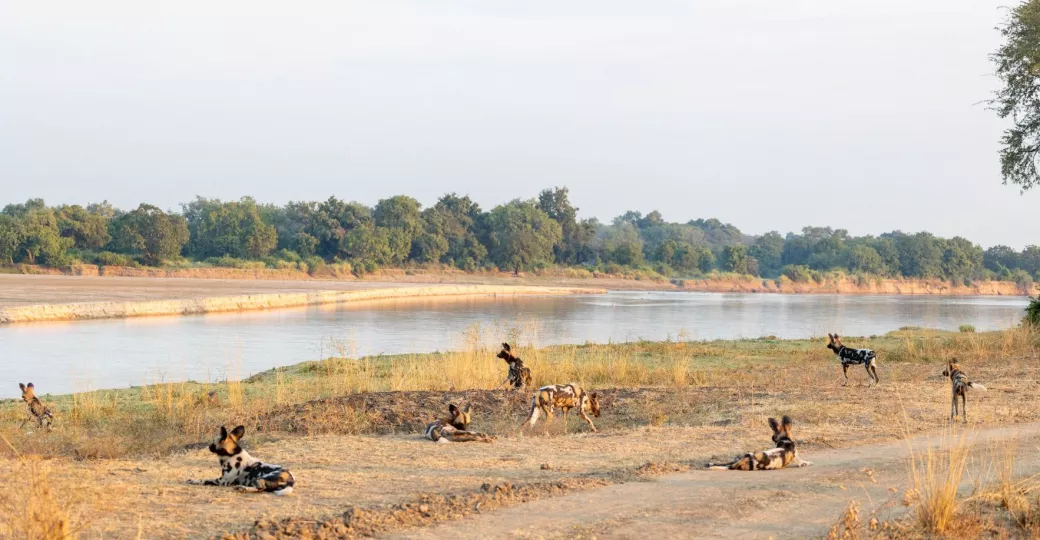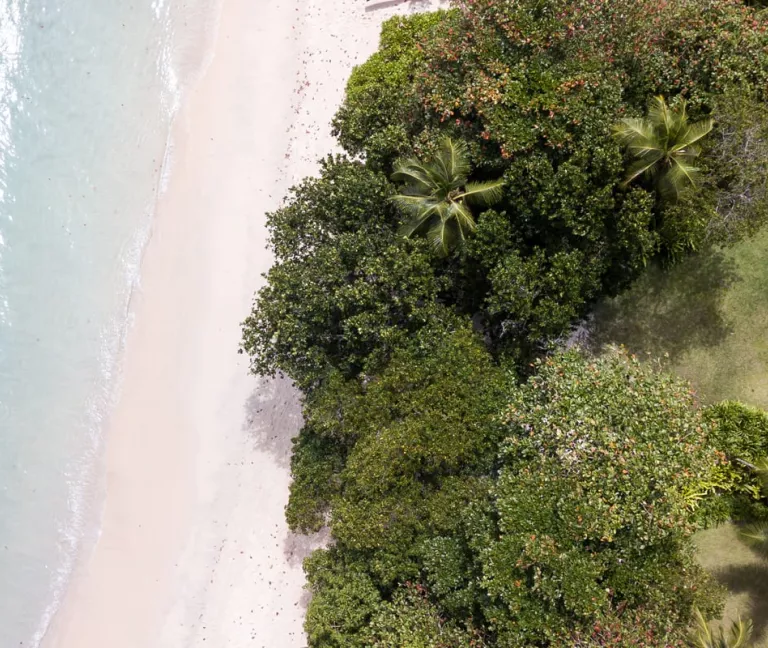
When people consider the impact of climate change on wildlife, most will picture melting ice caps and polar bears...
The sad reality is, however, that the slow but steady increase in temperature is having an effect on all wildlife across the globe.
Here at Bonamy, we’ve been taking a look at one example in particular - the endangered African wild dog (Lycaon pictus). These distant cousins of our beloved pets live extremely energetic lifestyles. Hunting in packs, they use their incredible stamina to effectively run their prey out of energy.
To avoid overheating, they prefer to hunt in the morning and evening when it’s cooler. With increasing global temperatures, the window in which the dogs can hunt is shrinking, ultimately leading to fewer kills and less food to go around the family.


Wild dogs in the African wilderness
Research has now shown a relationship between rising temperatures and wild dog pup mortality rates. A recent study* in Botswana that spanned 25 years found that the average number of pups surviving to a year old in each litter fell from 5.1 from 1989-2000 to 3.3 from 2001-2012, with temperatures rising 1.1C between the two periods. Similar analysis in Kenya and Zimbabwe showed similar results. Researchers theorise that, simply put, less time hunting means less food to feed the young.
This study is among the first to show a relationship between global warming and its effect on wildlife that has adapted to survive in hotter climates. A separate study showed that African wild dogs have already lost 93% of their historical range due to increased farming, timber plantations and aquaculture**. An average pack of 9 dogs require a hunting area roughly the size of New York (800km squared) to survive. With higher temperatures, some of these areas are simply becoming too hot for some species to exist.
There are thought to be only around 7,000 wild dogs left in the wild in 70 or so packs. Sadly, unless there is some form of human intervention, the combination of climate change and habitat loss means extinction is one step closer for this amazing species.

Wild dogs in the Lower Zambezi - Toby Pheasant
Citation:
*Woodroffe, R., Groom, R., & McNutt, J.W. (2017). Hot dogs: high ambient temperatures impact reproductive success in a tropical carnivore. Journal of Animal Ecology.
**Wolf, C., & Ripple, W. J. (2017). Range contractions of the world’s large carnivores. Royal Society Open Science, 4(7), 170052.

James Handley
Born and bred in the South of England, James is Bonamy’s intrepid traveller. When not honing his skills in London over the last decade, he's spent much of his time on self-planned expeditions and a...
View profileNever miss a notebook entry with our newsletter


